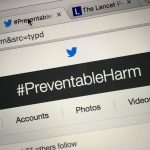
Danny Whiting reports on a study of mental health problems and long-term national trends in rates and court outcome for people convicted of homicide.
[read the full story...]
Danny Whiting reports on a study of mental health problems and long-term national trends in rates and court outcome for people convicted of homicide.
[read the full story...]
Sally McManus writes her debut elf blog on a recent national cohort study of multiple adverse outcomes following first discharge from psychiatric care, which finds that mental health inpatients are more likely to experience all types of adversity after leaving hospital.
[read the full story...]
Can risk assessment in mental health be evidence-based? Join us for the #PreventableHarm discussion in London on Wed 20th July 2016. This free open ‘question time’ style debate is being organised by the UCL Division of Psychiatry, The Lancet Psychiatry and the National Elf Service.
[read the full story...]
Ian Cummins considers the implications of a new cohort study of convicted prisoners in Sweden, which links psychiatric disorders with violent reoffending.
[read the full story...]
Laurence Palfreyman highlights a population study from researchers at Oxford University, which investigates the links between depression and violent crime. The study finds that people with depression were three times more likely to have been convicted of violent crime than those without depression, but we need to be careful about how we interpret these relative risk figures.
[read the full story...]
Dave Steele reports on a recent observational case series published in the Lancet Psychiatry, which concludes that patients with mental illness are two and a half times more likely to be victims of homicide than the general population.
[read the full story...]
People diagnosed with schizophrenia are 7.4 times more likely to be convicted of violent offences, 8.1 times more likely to die prematurely, and 20.7 times more likely to kill themselves.
[read the full story...]
The WISQARS Leading Causes of Death website is a mine of information for researchers and bloggers alike. I searched it to find out what the leading causes of death are for people (all races, both sexes) in the US aged 10-24 years. The top three in 2010 were: Unintentional injury (e.g. road traffic accidents, poisoning, [read the full story…]

Nearly 10 million people were in prison in 2008, according to estimates provided by the World Prison Population List (Walmsley, 2009). The United States tops the imprisonment league table with 2.3 million individuals behind bars, that’s 756 per 100,000 of the population. Whatever your view on the US legal system and incarceration, it’s interesting to [read the full story…]

‘Suicide and homicide in Northern Ireland’ is a new report from the National Confidential Inquiry into Suicide and Homicide by People with Mental Illness. The report shows that there are links between alcohol use and the increased suicide rate that has been seen in Northern Ireland over recent years. Suicide has been falling elsewhere in the [read the full story…]